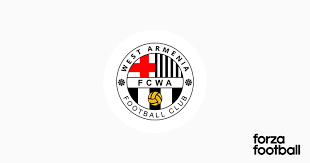
Discover Brighton & Hove Albion FC: A Coastal Gem
Brighton is not just a beautiful coastal city in the south of England; it’s also home to one of the most exciting football clubs in the English Premier League—Brighton & Hove Albion FC. This club has become an integral part of the local culture and community, drawing fans from all walks of life. The vibrant atmosphere around match days, combined with stunning seaside views, makes supporting Brighton & Hove Albion FC a unique experience that transcends mere sport.
The Rich History of Brighton & Hove Albion FC
The history of Brighton & Hove Albion FC is steeped in tradition and resilience. Established in 1901, this club has witnessed tremendous highs and lows over its long existence, shaping its identity as a beloved institution within the city of Brighton.
The Early Years: From Formation to First Success
The birth of Brighton & Hove Albion can be traced back to the turn of the 20th century. Initially formed by a group of local businessmen and sports enthusiasts, the club sought to represent the growing town of Brighton.
The early years were characterized by struggle as the team competed in various local leagues. However, their determination paid off in 1910 when they won their first major trophy—the FA Cup. This marked a significant milestone, placing Brighton firmly on the footballing map. The victory was not merely about lifting a trophy but signified the aspirations and hopes of the local community.
The challenges faced in these formative years laid the foundation for the club’s future ambitions. The loyalty of their supporters during difficult times contributed to a growing sense of identity—a connection between the team and the people of Brighton.
Post-War Revival and Growth
After World War II, Brighton & Hove Albion experienced a resurgence, both on and off the field. The club moved into the newly-formed Football League Third Division and began establishing itself as a competitive force.
The arrival of key players, coupled with strategic management decisions, helped elevate their status. Notably, the late 1960s saw Brighton achieve promotion to the Second Division for the first time, which ignited excitement among the fanbase and drew larger crowds to matches at the iconic Goldstone Ground.
During this period, the club became synonymous with grassroots support. Local businesses thrived as they catered to the influx of fans, creating a vibrant atmosphere around the stadium. The emotional investment of the community bolstered Brighton’s ambitions, cementing their place in the hearts of many locals.
The Glory Days: Promotion to the Top Flight
Brighton & Hove Albion FC reached new heights in the 1970s and 1980s, culminating in promotion to the English top flight, known then as the First Division. This achievement elevated the club’s status, allowing them to compete against some of the biggest names in English football.
However, the journey wasn’t without obstacles. The club faced financial difficulties and struggles to maintain their position in the league. These challenges forced Brighton to innovate, relying heavily on youth development and scouting networks to build a competitive squad.
Simultaneously, the passion of the fans never wavered. Attending matches became a ritual for many, with supporters traveling far and wide to witness their team in action. This unwavering loyalty served as a lifeline during turbulent times, helping the club pull through adversity.
The Modern Era: Rise Through the Ranks
In recent years, Brighton & Hove Albion FC has enjoyed remarkable success. The appointment of progressive management and a focus on cultivating young talent have allowed the club to climb through the ranks of English football. The move to the AMEX Stadium in 2011 represented a new chapter, providing state-of-the-art facilities and a modern matchday experience.
With a renewed sense of optimism, Brighton secured promotion to the Premier League in 2017. Competing among the elite has been challenging yet rewarding. The team’s commitment to playing an attractive brand of football has resonated well with supporters, echoing the values of the community—tenacity, pride, and creativity.
The club’s ethos has expanded beyond the pitch, engaging with local charities and initiatives. By fostering connections with the community, Brighton & Hove Albion FC has emerged as a model for how sports organizations can impact society positively.



